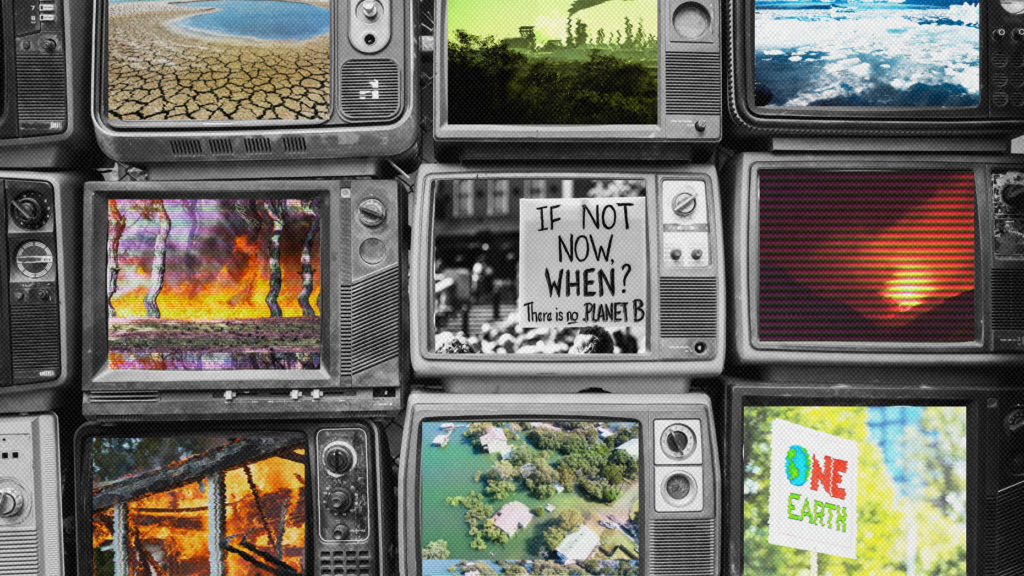The residents of Superior, Colorado, awoke to a normal day on Dec. 30, 2021. But by mid-morning, relentless winds that eventually reached upwards of 100 mph were blowing down from the nearby Rocky Mountains. In the coming hours, a wildfire raged beyond all precedent, destroying more homes than any other fire in the history of the state and leaving thousands of residents displaced and wondering what comes next.
In its brief flash of fury, the Marshall Fire burned four times more homes than the previous eight most destructive fires in the history of Boulder County combined. More than 1,000 structures were destroyed, most residential, across more than 6,000 acres. Despite this fact, the Marshall Fire was minuscule in size compared to the state’s other top blazes, reminding us that even smaller fires in the right location can cause catastrophic damage.
The Marshall Fire underpins a sense of growing unease in many communities throughout the Western United States, as ever more homes face the risk of wildfire in an increasingly arid and highly populated region. The conditions that made the Marshall Fire so destructive are indicative of a new confluence of factors — a new risk nexus, so to speak — that we’ve seen play out across California and Colorado, and which are primed to have serious impacts on an even wider swath of the American West’s housing market. As millions observe Earth Day on Friday, it is time to think critically about what this means.
The new risk nexus: Factors contributing to ever-worsening fires
There are several factors to account for when considering the relevance of the Marshall Fire to residential communities and real estate markets throughout the Western United States. Some of these factors are well established, while others are newer and rapidly evolving.
Factor 1
The first factor contributing to the new risk nexus is the multi-decade trend of population growth and development where the built environment and nature meet. In the case of the Marshall Fire, the communities affected were in a region that has seen growth both in total number of residents and in expansion of development along this urban-wildland interface.
According to data from the St. Louis Federal Reserve, Boulder County, where the Marshall Fire occurred, issued an average of just under 1,600 new private housing building permits per year for the 10-year period preceding the fire. This comes on top of previous construction booms such as the 1991-2000 period, when the county averaged just under 3,000 new private housing building permits per year. The area’s population has grown by over 40 percent from 1990 to today.
The development trends in the communities affected by the Marshall Fire are commonplace across the Western United States. More and more Americans are choosing to live closer to nature in order to have direct access to the outstanding outdoors lifestyle and vistas of the American West, and to take advantage of employment or retirement opportunities across the region, fueling the building and population boom. Yet as the infrastructure grows to accommodate the increasing population of the American West, the risks and costs associated with living on the edge of nature are also increasing.
A recent report by CoreLogic found that in 2019, more than 1.7 million homes in the American West at large were at high to extreme risk of wildfire damage or destruction. Fire mitigation techniques that are being advocated across these communities, such as brush clearing, hardening homes to resist fire through building materials and cinder resistance, and increased public resources can help reduce the risks.
Yet these mitigation efforts alone cannot fully account for the risk posed by a surrounding environment made of grass and wood. All houses contain materials that can burn. Mitigation measures can make a tremendous difference, but there is no such thing as fireproofing an arid and windy West.
Factor 2
The second major factor contributing to this new risk nexus is the increasingly hot and dry conditions, as well as greater fluctuations in extremes of weather patterns, throughout the American West. These conditions are breeding grounds for catastrophic fires.
To take the Marshall Fire as an example, University of Colorado researchers note that higher-than-normal precipitation in the first portion of 2021 led to increased growth in grasses in the wildlands adjacent to the affected communities in Boulder County. Uncommonly dry conditions in the latter portion of the year resulted in dangerously combustible grassland at the time of the fire.
The Marshall Fire also occurred in the middle of winter, historically considered a time of low fire risk. However, shifting weather conditions are resulting in what many observers are calling “the end of fire season,” in that fire season is now a year-round phenomena rather than occurring in the warm season only.
These fluctuations also pose risks to regions not normally associated with major wildfires, such as traditionally high-precipitation portions of the Pacific Northwest, which have seen unrivaled wildfire and high heat events in recent years. The conditions and scale of fire risk are shifting dramatically and rapidly. Recent research by Sean Parks of the U.S. Forest Service asserts that the annual area burned by high-severity fires in the American West increased by 800 percent between 1985 and 2017.
Factor 3
The third factor in the risk nexus is the unprecedented strain on firefighting resources. This factor is a result of the first two, which have combined to produce increasingly severe fires, often occurring simultaneously across vast swaths of the West.
The number and scope of fires have grown so great in recent years that even with increased resources dedicated to firefighting at the national and state levels, Western communities are finding the resources to defend their homes may already be deployed elsewhere.
In Los Angeles County’s 2018 Bobcat Fire, only a small portion of the resources that would normally be deployed in an urban-adjacent wildland were available, as personnel and aircraft were tied up across the rest of the state where some two dozen other fires were already raging.
According to news reports at the time, fire personnel on the scene indicated that they would have expected to have two to three times more resources than were available. The lack of resources may have limited the crews’ ability to stop the fire in the early phase. Despite outstanding efforts by those on scene, the fire went on to destroy or damage more than 100 homes and grew to be the second-largest fire in Los Angeles County history, at more than 115,000 acres.
It’s an open question whether resources and capacity can grow fast enough to keep up with the demands of increasing fire risk. There are also complications such as the barriers faced by former convicts assigned to wildfire-fighting units in California in finding post-release employment as professional fire fighters. The low pay and unsustainable deployments for federal firefighters also take a toll on existing personnel and limit recruitment success.
Enduring risk across the West is the new normal
It isn’t only in California and Colorado that the realities of this risk nexus are playing out. Communities across the West are facing similar conditions — a truth that a 2020 report by Kimiko Barrett, PhD of the Headwaters Economics makes abundantly clear.
Dozens of communities across every state in the West are featured in the report as having historical fire incidents of 100 acres or more within two miles, among them some of the fastest growing and most heavily populated communities in the region. The list includes 42 cities with a population of 50,000 or more across Arizona, Colorado, Idaho, Montana, Nevada, Oregon, Utah, Wyoming and Washington.
As of 2019 these same nine Western states, excluding California, have over 600,000 homes at high to extreme risk of damage or destruction by wildfire, according to CoreLogic. And as recent research from ClimateCheck makes evident, though the second risk tier after “extreme,” “high” risk homes face a very real threat of catastrophic fire. In their analysis of the Marshall Fire, ClimateCheck found that not a single one of the residential structures burned in the fire were in the “extreme” fire risk category. Yet over 1000 residential structures in a secondary risk zone burned that day, nonetheless, making evident the shift in the risk nexus.
As the factors and trends driving this new risk nexus continue to play out, it’s appropriate to expect that residential housing will face ongoing risk and destruction by fire damage, sometimes associated with a catastrophic events like the Marshall Fire. How homeowners, renters and the housing market at large will respond to these increasing pressures is currently being defined by events on the ground, often reactive rather than proactive.
There’s a tipping point between the costs of Western living and the benefits of the lifestyle it brings, but it remains to be seen whether or not it will be reached. But as things stand, housing inventory is being taken offline by fire in already-squeezed markets; homeowners, buyers and renters are internalizing the threat of fire; insurers’ appetite for risk continues to diminish; fire-response services are increasingly stretched thin; and state and local governments limit rebuilding or enforce more prohibitive building standards.
Meanwhile, one thing is clear: The often-unstoppable force of Western wildfires will continue to meet the immovable object of our communities. Recent history is clear on the victor.
Email Derek Berlin
Derek Berlin is a California-based writer and researcher. His work focuses on issues of land and natural resource use in the American West.



 Are You Interested in West Eleventh Residences Miami?
Are You Interested in West Eleventh Residences Miami? Are You Interested in ONE Park Tower by Turnberry?
Are You Interested in ONE Park Tower by Turnberry? Are You Interested in Diesel Wynwood Condominium?
Are You Interested in Diesel Wynwood Condominium? Are You Interested in Five Park Miami Beach?
Are You Interested in Five Park Miami Beach? Are You Interested in Cipriani Residences Miami?
Are You Interested in Cipriani Residences Miami? Are You Interested in Bentley Residences Miami?
Are You Interested in Bentley Residences Miami? Are You Interested in Baccarat Residences Brickell?
Are You Interested in Baccarat Residences Brickell? Are You Interested in Aria Reserve Miami?
Are You Interested in Aria Reserve Miami? Are You Interested in 888 Brickell Dolce & Gabbana | Miami?
Are You Interested in 888 Brickell Dolce & Gabbana | Miami? Are You Interested in 600 Miami WorldCenter?
Are You Interested in 600 Miami WorldCenter? Are You Interested in HUB MIAMI RESIDENCES?
Are You Interested in HUB MIAMI RESIDENCES? Are You Interested in WALDORF ASTORIA RESIDENCES?
Are You Interested in WALDORF ASTORIA RESIDENCES?